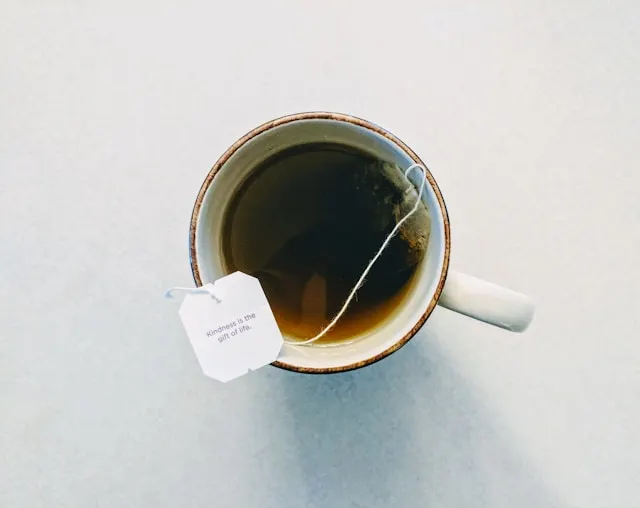Studies indicate that commercial tea bags release millions of microplastics during consumption, one of the largest sources of pollution harmful to human life.
Although it’s a practical alternative, consuming tea bags of any kind could be detrimental to your health, according to research conducted by the Autonomous University of Barcelona (UAB) in conjunction with specialists from the Helmholtz Centre for Environmental Research in Leipzig, Germany.
This is due to the enormous amount of microplastics they contain, according to the researchers involved in the study. These particles are also found in clothing, cigarettes, and cosmetics, which can be up to five millimeters in diameter, posing a threat to human life and other species, according to data from the United Nations Environment Program (UN).
The global body also adds that this component can even be found in the placenta of newborns. Regarding other health risks, data from National Geographic indicates that microplastics are linked to lung conditions such as asthma and chronic obstructive pulmonary disease (COPD) , which cause millions of deaths each year.
According to researchers, food packaging is one of the main sources of microplastic and nanoplastic (MNPL) contamination, and inhalation and ingestion are the primary routes of human exposure.
What do studies say about tea bags and microplastics?
First, the study indicates that commercial tea bags based on polymers, i.e. macromolecules composed of one or more chemical units, release millions of nano and microplastics into the infusion.
This discovery demonstrates for the first time the ability of these particles to incorporate into human intestinal cells. They can then reach the bloodstream and spread throughout the body. Plastic waste pollution represents a critical environmental challenge, with growing implications for the well-being and health of future generations.
In this context, a study by the Mutagenesis Group of the Department of Genetics and Microbiology at the UAB (northeast Spain) successfully obtained and characterized micro and nanoplastics derived from various types of commercially available tea bags.
The researchers observed that when these tea bags are used to prepare an infusion, they release enormous amounts of nanometer-sized particles and nanofilamentous structures, which is a significant source of exposure to MNPLs. It’s worth noting that the tea bags used in the research were made from the polymers nylon-6, polypropylene, and cellulose.
The results of the work show that, when making an infusion, polypropylene releases approximately 1.2 billion particles per milliliter , with an average size of 136.7 nanometers, and cellulose about 135 million particles per milliliter, with an average size of 244 nanometers.
Nylon-6 also has 8.18 million particles per milliliter, with an average size of 138.4 nanometers.
How was the research carried out?
The researchers’ work required the use of various advanced analytical techniques, such as scanning electron microscopy (SEM), transmission electron microscopy (TEM), and infrared spectroscopy (ATR-FTIR), among others.
“We have managed to characterize these contaminants in an innovative way using a set of cutting-edge techniques, which constitutes a very important tool for advancing research into their potential impacts on human health,” emphasized UAB researcher Alba García.
In this way, the particles were stained and exposed for the first time to different types of human intestinal cells to evaluate their interaction and possible cellular incorporation.
Biological interaction experiments showed that mucus-producing intestinal cells were the most likely to absorb micro- and nanoplastics. Furthermore, the particles even penetrated the nucleus, which houses the genetic material.
The result suggests a key role for intestinal mucus in the absorption of these polluting particles and underscores the need for further research into the effects that chronic exposure can have on human health.
“As plastic use in food packaging continues to increase, addressing MNPL contamination is vital to ensuring food safety and protecting public health,” the researchers emphasized.
Natural alternatives
If you’d like to replace tea bags with a natural option, we suggest some easy-to-prepare homemade infusion alternatives. These options include:
- St. John’s Wort Tea. This is one of the easiest infusions to make . Simply boil a few leaves of this plant in water to make this tea at home.
- Chamomile tea. This ingredient is easily found in local markets and, like pericón tea, can be prepared at home.
- Tea is made from fruit peels. Both pineapple peel and certain citrus peels can be used to prepare natural beverages.
- Linden tea. In Guatemala, this is one of the most popular homemade options, as it’s a natural plant that’s good for combating stress and some ailments, according to experts.

